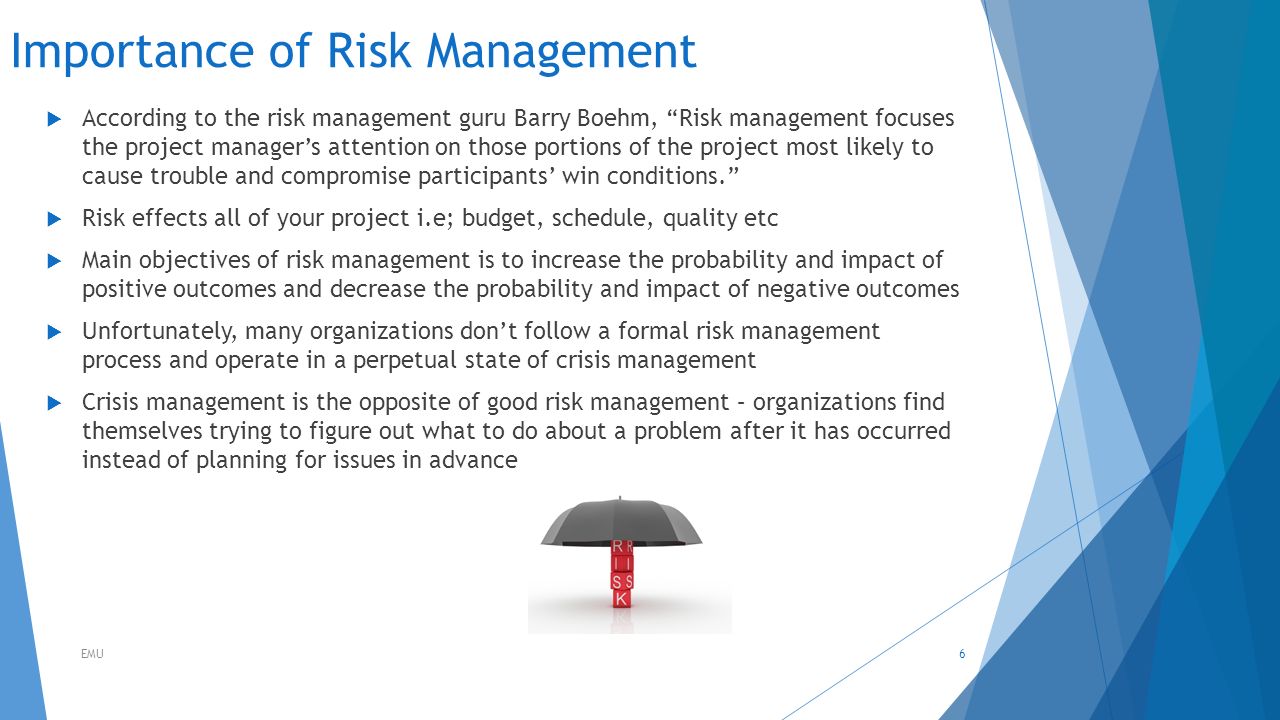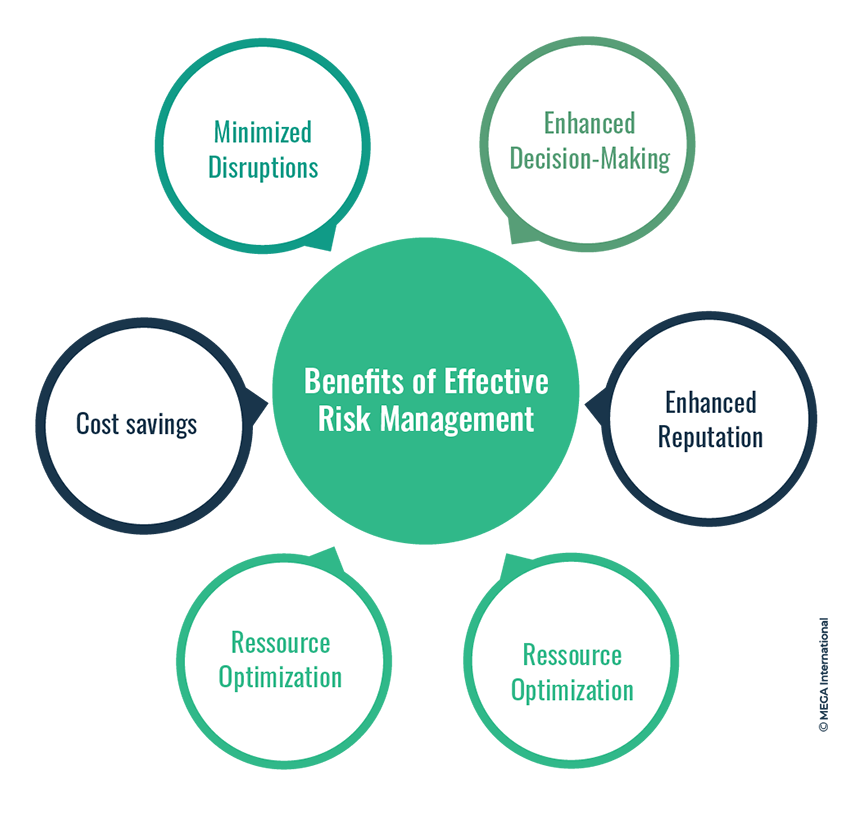Addressing the Unseen Risks: The Importance of Risk Management in Tech
Addressing the Unseen Risks: The Importance of Risk Management in Tech
Blog Article
Checking out the Importance of Risk Management for Effective Decision-Making Methods
In the elaborate globe of company, Risk Management emerges as a critical consider the decision-making process. The capability to recognize prospective hazards and chances, and plan appropriately, can lead to the difference between success and failure. With tools such as SWOT and PESTEL, companies are outfitted to make enlightened options, fostering durability and versatility in an ever-changing setting. Wondering just how this functions? Allow's unbox the dynamics better.
Recognizing the Concept of Risk Management
Risk Management, an important element in decision-making, is often misconstrued or oversimplified. Risk Management entails structured and disciplined techniques, utilizing information and informative analyses. From monetary unpredictabilities, legal responsibilities, tactical Management errors, to mishaps and natural calamities, it attends to various dangers - importance of risk management.
The Role of Risk Management in Decision-Making Processes
In the world of calculated preparation and company operations, Risk Management plays an indispensable duty in decision-making procedures. Risk Management hence ends up being an essential device in decision-making, assisting leaders to make educated choices based on an extensive understanding of the risks entailed. Risk Management serves as an essential element in the decision-making processes of any organization.

How Risk Management Improves Strategic Planning
In the context of critical preparation, Risk Management plays a pivotal function. Starting with the identification of prospective risks, it further encompasses the application of Risk reduction measures. The duty of Risk Management is dynamic yet not fixed, as it demands continuous tracking and adjusting of techniques.
Identifying Possible Risks

Applying Risk Reduction
Having established the value of determining prospective threats, the following action is to discover Risk reduction. This procedure entails developing and implementing strategies to manage identified dangers efficiently. It is an important element of calculated preparation as it boosts decision-making by decreasing possible adverse results. Risk mitigation strategies can range from Risk evasion, Risk transfer, to run the risk of decrease. Each technique ought to be tailored to the specific Risk, considering its possible influence and the company's Risk resistance. Efficient Risk reduction calls for a deep understanding of the Risk landscape and the prospective effect of each Risk. This understanding enables address organizations to focus on risks and designate sources successfully, ensuring that one of the most substantial hazards are attended to first.
Tracking and Readjusting Techniques
Though Risk reduction is an essential action in critical preparation, continual tracking and change of these approaches is equally crucial. It likewise offers an opportunity to examine the success of the Risk Management measures, permitting changes to be made where essential, further boosting critical preparation. Monitoring and adjusting Risk Management techniques is a vital component for boosting a company's durability and tactical preparation.
Case Studies: Effective Risk Management and Decision-Making
In the content world of organization and financing, effective Risk Management and decision-making typically offer as the pillars of flourishing business. These instances highlight the worth of sharp Risk Management in decision-making processes. These situations underscore the essential role of Risk Management in tactical decision-making.
Devices and Methods for Reliable Risk Management
Navigating the elaborate maze of Risk Management requires the right collection of devices and techniques. These devices, such as Risk registers and warmth maps, aid in recognizing and assessing prospective risks. Strategies consist of both quantitative techniques, like level of sensitivity analysis, and qualitative techniques, such as SWOT evaluation. These aid in focusing on threats based on their prospective effect and chance. Risk reaction approaches, a key component of Risk Management, involve approving, avoiding, moving, or mitigating dangers. Monitoring and controlling threats, via regular audits and reviews, guarantee that the techniques continue to be efficient. With these techniques and tools, decision-makers can navigate the facility landscape of Risk Management, therefore assisting in notified and efficient decision-making.
Future Trends in Risk Management and Decision-Making Methods
As we check out the huge landscape of Risk Management, it becomes evident that the methods and tools used today will remain to advance. Future patterns direct towards an increased reliance on modern technology, with fabricated knowledge and maker knowing playing significant duties. These modern technologies will enable companies to anticipate potential dangers with higher accuracy and make even more educated decisions. In addition, there will be a growing focus on resilience, not just in taking care of threats however also in recuperating from unfavorable scenarios. Finally, the concept of Risk society, where every member of a company realizes and entailed in Risk Management, will get more prestige. These trends proclaim a more comprehensive and positive strategy towards Risk Management and decision-making.
Verdict

Risk Management hence comes to be a vital device in decision-making, assisting leaders to make informed selections based on a thorough understanding of the dangers included. Risk reduction techniques can range from Risk evasion, Risk transfer, to run the risk of decrease (importance of risk management). Reliable Risk reduction needs a deep understanding of the Risk landscape and the possible effect of each Risk. Risk response strategies, a key element of Risk Management, include approving, preventing, transferring, or mitigating threats. The principle of Risk society, where every participant of an organization is aware and included in Risk Management, will certainly acquire more prestige
Report this page